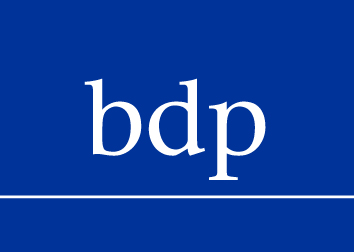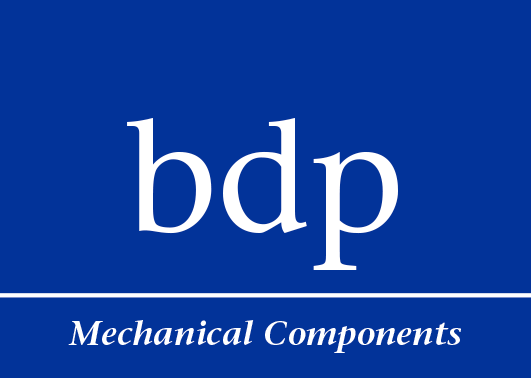Newsletter May 2022:
By: Xiuguo Dong
Case Study – An example of project development during the pandemic
Since 2020, the whole world has been affected by COVID-19. Companies in the global supply chain are confronted with unknown challenges; among other things, costs for many types of metals have increased enormously, and no relief is yet visible in overseas transportation costs. Moreover, the exchange rate, e.g., EUR/CNY or EUR/USD, is unfavorable.
In terms of medical technology, more and more vaccines, medicine, etc., are being developed, manufactured, and distributed worldwide. In addition, the greatly expanded online and delivery services make daily life easier. Also, to continue to maintain international trade and multilateralism, there are a variety of approaches by companies and institutions from different industries. Regardless of the political and macro-economic processes, bdp Mechanical Components (bdp MC) presents an industry approach with a case study from practice:
The project in this case study involves five components of a hand winch. The material is cast iron. The parts weigh between 0.4 and 2.5 kg. They are to be cast, machined, and a prime coat needs to be applied. The average annual demand of the customer is 500 winches. We received the request in June 2020. It is the first project with the customer. In this article, our approaches are shown in the following aspects:
- Offer and initial negotiations
- Sample approval
- Serial production
1. Offer and initial negotiations
After receiving the customer’s inquiry, we contacted several producers in Eastern Europe and China who have experience with similar components. Our sourcing and/or purchasing colleagues are directly located in the sourcing countries, so good communication with our producers is ensured. This international setup as well as our network are exceptionally critical to us since, as a one-stop supplier, we offer a competitive price and be an extension of the customer’s purchasing, quality, engineering, and logistics departments. Our employees in the purchasing, technology and quality departments in the respective procurement countries can coordinate with the producers in the same language and on-site on topics relating to price, technical requirements, throughput times, etc.
After comparing the supplier offers, the offer from a Chinese supplier proved to be the most suitable. The foundry, which has its own machining and finishing plants, can produce a high variety of different products, each in relatively small quantities. Usually, most producers in China prefer large batch sizes with about two tons per delivery and continuous deliveries per year. This producer had no further questions about the dimensions or the requirements in the drawings. After consulting with the producer, we proposed tolerance classes according to ISO 8062 and ISO 2768 because the drawings did not contain any guidelines on casting and machining tolerance. We submitted those together with the quotation to the customer. The customer found our offer competitive. The proposed tolerance classes were agreed on. Due to the pandemic, communication mainly was by mail and phone calls, which went smoothly. To go into more detail about the offer and discuss the start of the cooperation, we also organized a personal meeting with the customer. After the visit and other mutual agreements, it was possible to agree on, among other things, one-off costs and terms of payment, which paved the way for the start of production.
2. Sample approval
This phase started with a project kick-off meeting between bdp MC and the producer on-site. Such a faceto-face meeting is essential mainly because of the following aspects:
- Go through drawings in detail to identify possible risks in production
- To concretize the production plan for patterns, samples, and series to make a reliable forecast
- At the time of the nomination in 2020, it was not yet necessary, but since last year the material and transport costs have risen enormously. Since the end of 2021, the exchange rate has become less favorable, so a price review is currently necessary for each order to avoid losses on the project. Of course, this must be agreed on in advance with customers and requires continuous coordination as long as these challenges still exist
The main challenge in this project is that the product is quite old. Therefore, the product data has not been digitized. Typically, it is optimal to summarize all ambiguities with the producer and clarify them with the customer at once. In reality, though, this project included several rounds of clarifications. When we get closer to production, we can uncover more production-specific issues that we could not discover before. This customer understood our queries because he knew that the product data in this project was not concrete enough. We have created 3D models and provided them to the producer free of charge, which increased the customer’s confidence in us. The customer was satisfied with our initial samples. All dimensions specified in the drawings were observed; a few points needed to be optimized to enable the components to interact more smoothly after assembly. These aspects could only be identified with production experience and after consultation with the customer; they were not directly apparent from the drawings. Our sales team in Germany revisited the customer on-site to better understand the situation and confirm the project’s continuation. Communicating directly with customers and producers in their native languages makes the project management process very efficient. After the producer was able to identify the root causes, these defects were corrected through pattern optimization and machining adjustments.
Starting a project is not easy, especially when the customer cannot be with the producer in person. We are aware of this fact and our role as a one-stop supplier. Therefore, having professional employees onsite at the customer and producer is an essential prerequisite for us, which we attach great importance to. This is the only way that product data can be optimally specified step by step, physical samples can be produced accordingly, and mutual trust can be built up over the long term.
3. Serial production
The serial production started in 2021. The biggest challenge was that the impact of fluctuations in material costs, transport costs, and the exchange rate began to show their effects. Thus, we had to increase prices and adjust them for each delivery to cover the effects of the fluctuations.
No customer in the world accepts price increases outright. Several negotiations and compromises between the customer, bdp MC, and producer, from the end of 2021 until the beginning of January 2022, were necessary until all parties accepted a solution. As a sign of goodwill, the producer gave a discount on material costs because more projects should follow from this customer. The transport costs were shared between the customer and us. The price for each delivery is still adjusted individually concerning the exchange rate because the fluctuations continue to be unpredictable.
Outlook
Project management is not easy. The pandemic brings even more challenges. For this case study’s fairly straightforward project, almost two years were needed. However, it is possible with enough dedication, ambition, and patience. With our competent colleagues and through international networking, we can contribute to the success of global supply chains. We support our customers efficiently and sustainably in finding suitable procurement options and handling international projects successfully.


